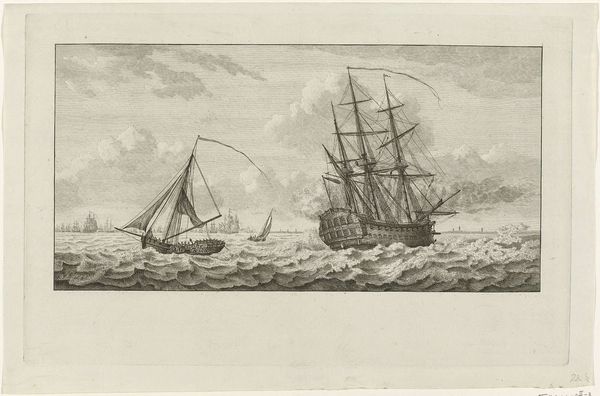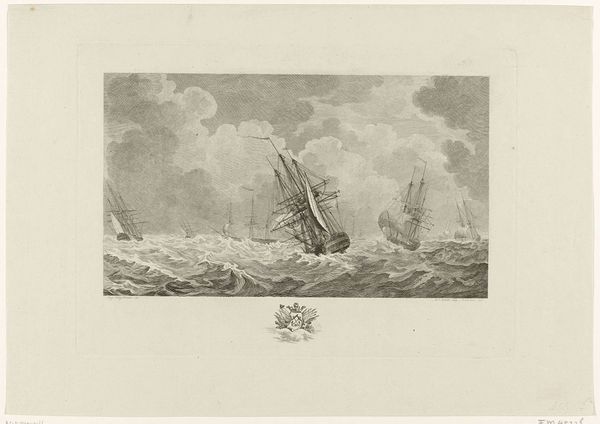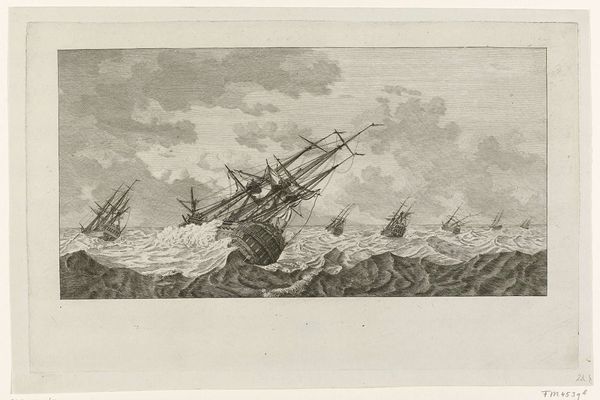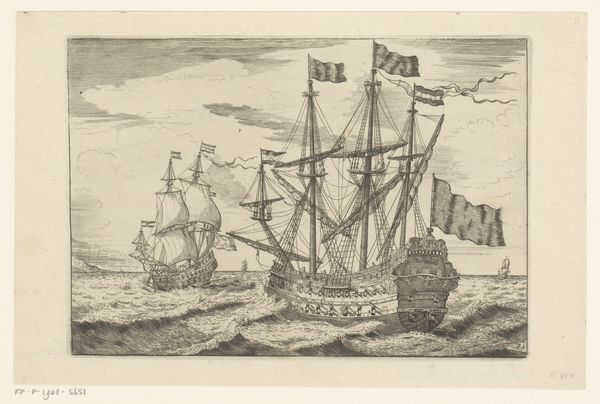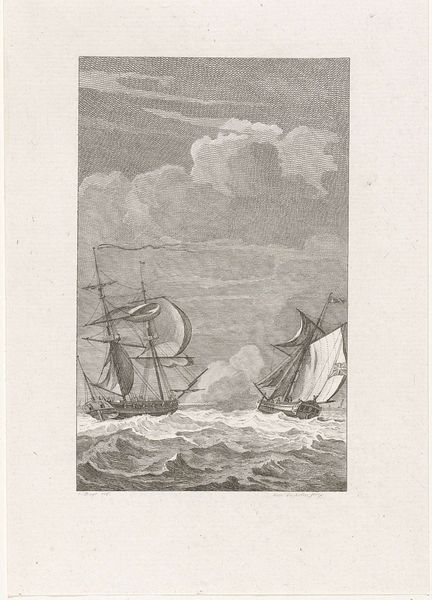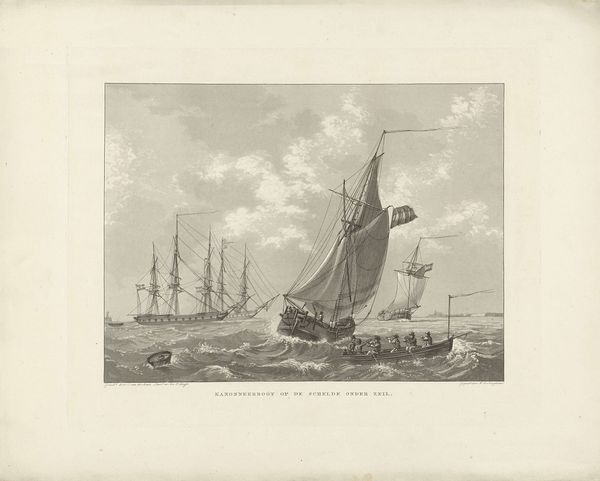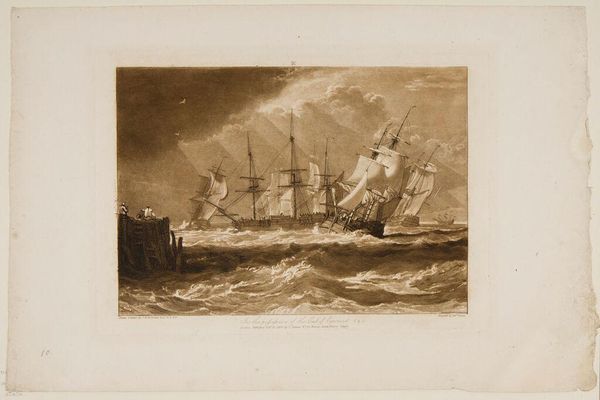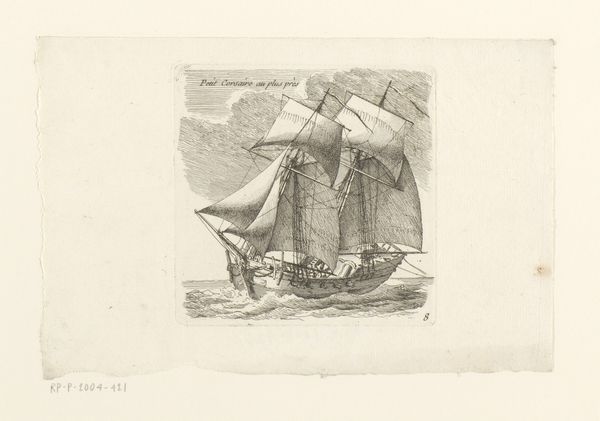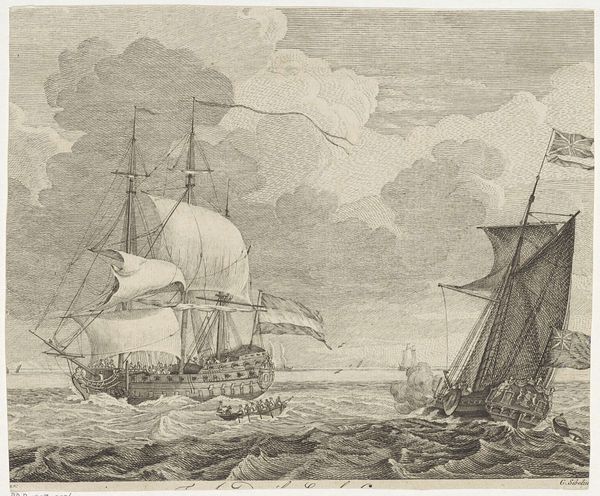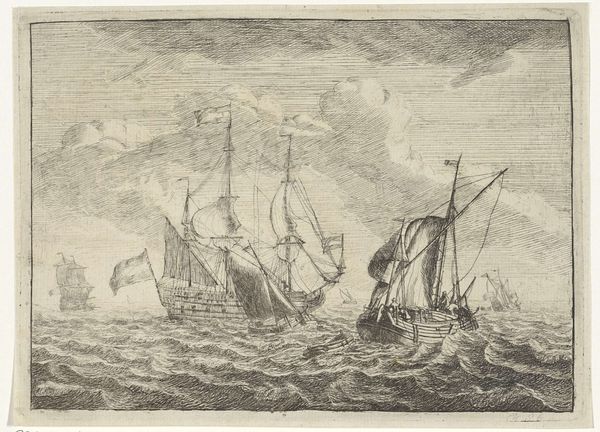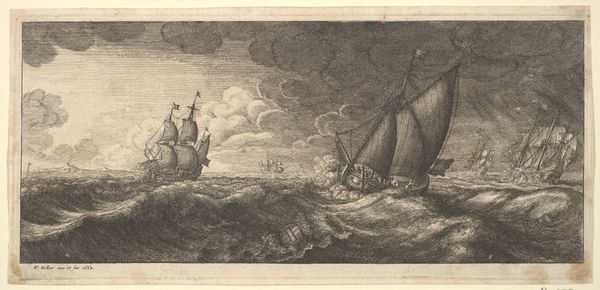
Dimensions: height 256 mm, width 400 mm
Copyright: Rijks Museum: Open Domain
Curator: What a dramatic scene! Carel Frederik Bendorp’s etching, "Redden van de bemanning van het schip Holland, 1781," made in 1784, captures a powerful historical moment. Editor: My first thought is of survival against overwhelming odds. The rough sea etched with precise lines, and the contrasting dark clouds and sporadic rays, emphasize the material difficulties these sailors faced. It makes you consider the labor and the resources necessary to build and maintain ships of this period. Curator: Exactly. This print, now residing at the Rijksmuseum, visualizes the rescue of the Holland's crew. Bendorp likely used readily available printmaking tools and techniques, thus enabling a broader audience to witness, at least second hand, a relatively recent event of national interest. Editor: Printmaking also allowed for distribution beyond traditional art spaces. Its value is as an affordable mass produced reproduction intended to inform or promote shared societal views. The use of etching allowed for a reproduction with relatively fine detail that mirrors history painting. I wonder about Bendorp’s patron. Curator: That’s a good question. Bendorp likely responded to the demand for imagery tied to naval history. The Dutch Republic was built on seafaring, so narratives of maritime successes—and survival in the face of disaster—held immense social and political weight. Prints like these played a role in shaping public perception. We are far removed from such manual processes. Editor: Yes, today digital image production allows near immediate, easily distributed renderings of events. Considering the materials – the copper plate, the ink, the paper – emphasizes the physical labor of producing multiple identical images of one event. That makes me consider how consumption and production are tied together. Curator: Precisely! This etching gives us not just a glimpse into an important naval event, but also into the socio-political machinery of 18th-century Dutch society and art production. Editor: Looking at the ship struggling on rough waters forces reflection on Dutch history, as shaped by the exploitation of both natural materials and physical labor, on ships just like these. Curator: Indeed, it shows us that understanding historical prints allows us to interpret the Dutch relationship with its nautical prowess. Editor: Yes. The material itself, multiplied, informs us.
Comments
No comments
Be the first to comment and join the conversation on the ultimate creative platform.
